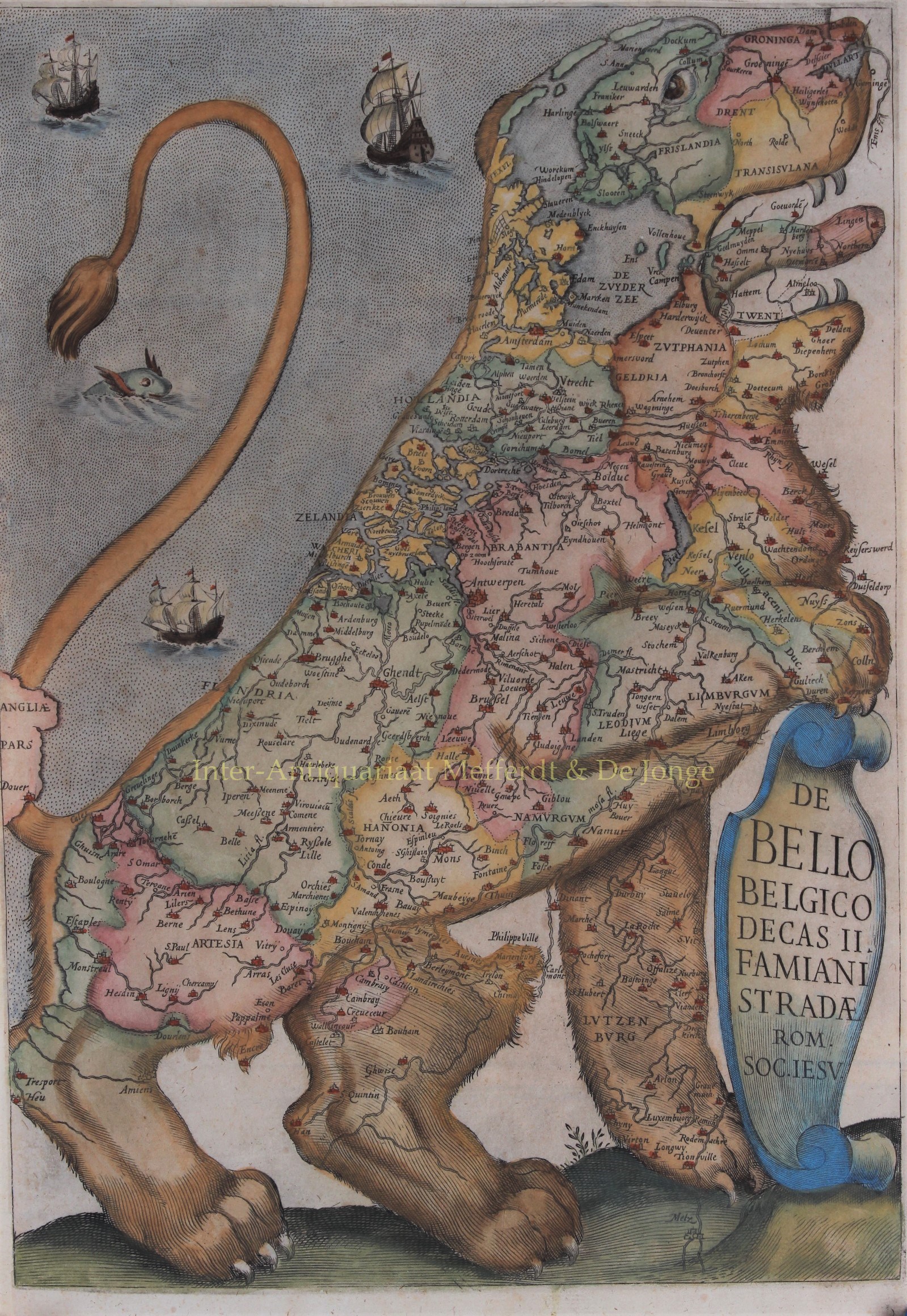LEO BELGICUS
Copper engraving published by Francisco Corbelletti in Rome in 1647 as part of Famiano Strada´s De Bello Belgico [Of the War in the Low Countries]. Coloured by a later hand. Size. 31 x 22,1 cm.
The Dutch lion is a household name. The animal symbolizes the strength and courage of the Low Countries. The lion plays an important role in football in our present time, but the depiction of the Netherlands as a lion was introduced in difficult times, at the end of the 16th century, when the Netherlands were fighting the Eighty Years’ War for independence against the Spaniards. From 1583 onwards, a number of maps with the Netherlands in the form of a lion came on the market.
The lion map not only functioned as a useful map, but was often hung on the wall as a statement. It was an expression of active citizenship, of pride, of self-awareness and often served as a spectacular piece in the house of a merchant or government building.
Gallia Belgica was the northern part of Gaul between the Seine and the Rhine in Roman times. As a Latin name, Belgica later became synonymous with the Seventeen Provinces and the Low Countries.
This lion map is attributed to Johan Willem Bau(e)r (1607-1640) or Jan Miele (1599-1664), both were involved with engraving for Famiano Strada´s book on the Eigthy Years’ War.
Reference: “Leo Belgicus – An illustrated and annotated carto-bibliography” (2006) by H.A.M. van der Heijden, no. 7.2.
Price: SOLD


